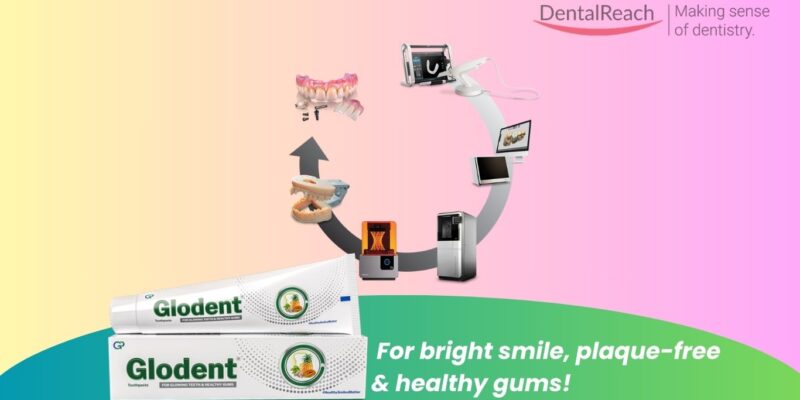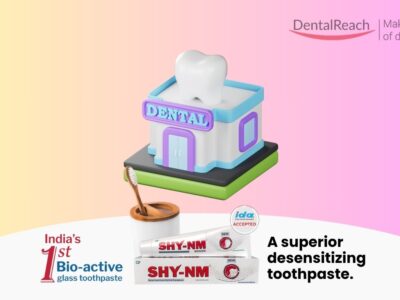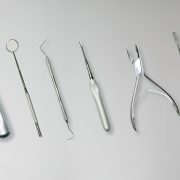The shift to digital dentistry is delivering clear returns for practices and labs. By integrating tools like CAD/CAM design, guided implant planning, and digital smile design, clinics boost efficiency, cut costs, and win patient confidence.
In each case below, we highlight specific software, measurable outcomes, and why the investment paid off.
Case 1: Allure Dental Studio (USA) – Full In-House CAD/CAM Lab
Allure Dental Studio, a private lab founded by master technicians, invested in a fully digital workflow combining 3Shape scanners/CAD software and an Objet 3D printer. This “all-in” approach eliminated outsourcing and allowed the lab to control every step. The reported ROI was dramatic:
- 70–80% faster production: 3Shape’s integrated workflow cut turnaround time by well over half.
- Higher output per technician: Skilled staff produced many more restorations daily.
- More case volume: Offering new indications (digital dentures, implants, etc.) brought in additional orders.
- Better labor utilization: Technicians’ hours are focused on design instead of manual tasks.
These gains let Allure grow without adding headcount – boosting revenue and profit from the same staff. (By contrast, traditional crown production takes days; the lab’s new system mills crowns in hours.) In India, leading labs see similar benefits.
For example, Dr. Shiva Shankar notes that digital CAD/CAM (exocad DentalCAD and exoplan) lets his lab mill a ceramic crown in ~20–30 minutes versus days the old way. He now runs multiple exocad licenses for crowns, partials, dentures and implant cases. In short, bringing design and fabrication in-house paid off via huge time savings and capacity gains.
Case 2: Dr. Austin Westover (USA) – In-Office CAD/CAM + Smile Design
At Dent All-on-One Dentistry in Virginia, Dr. Austin Westover installed a Planmeca FIT Plus system (Emerald S scanner + PlanCAD Premium software + PlanMill milling) to handle restorations entirely in-house. This chairside CAD/CAM workflow slashed lab expenses and appointment count. The practice’s ROI highlights:
- Massive lab fee cuts: A single crown that once cost ~$120 from a lab now costs only ~$10 in-house; a multi-unit implant case dropped from ~$450 to ~$90.
- One-visit restorations: Prepping, milling and placing a crown in one appointment eliminated second-visit costs (no temporaries, no waiting).
- Reduced overhead: Milling night guards and appliances on-site (materials ~$50) often removed lab bills entirely.
- New patients & cases: Enhanced workflow and a Smile Design preview boosted case acceptance – roughly 100 new patients per month came in after adopting the system.
Critically, Dr. Westover was able to try different designs before milling, improving fit/esthetics and minimizing post-fit adjustments. Patients loved seeing their new smile on-screen (Planmeca’s smile-design module) and appreciated same-day service. The advanced technology also spurred word-of-mouth referrals, further increasing revenue.
For practice owners, this case shows how in-house CAD/CAM pays for itself: reduced lab spend, more profitable cases, and higher patient retention. (Indian dentists report similar wins; clinics with chairside milling note vastly lower lab costs and happier patients.)
Case 3: Dr. Victoria Holden (UK) – Digital Smile Design for Complex Cases
The Briars Dental Center in the UK, led by Dr. Victoria Holden, adopted Digital Smile Design (DSD) software to unify planning across restorative, orthodontic and implant treatments. Before DSD, the clinic struggled with fragmented planning and patient uncertainty. After implementing the DSD framework, they saw:
- Higher case acceptance: Patients previewed their proposed smile, greatly increasing engagement and trust. “Substantial improvements in patient engagement and case acceptance” were noted.
- Streamlined workflows: Centralized digital planning let the team coordinate orthodontics (e.g. Invisalign), implants and cosmetic work in one system. Delegating Invisalign case setup to the DSD team freed the doctor to see more patients.
- Clinic efficiency: With DSD tools, the practice confidently handled a higher volume of complex cases. Team members became more skilled and aligned, improving consistency across treatments.
- Predictable outcomes: Digital visualization made treatment outcomes more predictable, reducing revisions and increasing patient satisfaction.
In Dr. Holden’s words, DSD “allows us to have much better clarity of the treatment plans from the outset”. This comprehensive approach – from Invisalign setups to implant restorations – translates into financial ROI.(In general, digital smile/ortho planning has been shown to boost referrals and per-case revenue by eliminating patient uncertainty.)
For clinic owners, the lesson is that investing in patient-facing design tools can drive premium case volume and retention.
Insights for Owners, Investors and Developers
Across these cases, digital software drove ROI in several common ways. Cost reduction and efficiency were universal benefits. Revenue growth followed from these savings. Dr. Radwa Saad (DentistryIQ case) reports her digital lab and CAD/CAM workflow helped her practice surpass $1M in revenue by attracting high-end cases. Visual tools boosted case acceptance – patients who see a realistic preview of their smile almost always say “yes” to treatment. Moreover, referrals rise when patients appreciate the speed and technology.
For software vendors and developers, user-friendly, open platforms (like exocad) were key to adoption. Integrating tools (scanners, CAD, and production) into one seamless workflow made these returns possible. Investors and practice owners should note that the financial upside can be seen in both top-line (more cases and premium services) and bottom-line (fewer lab fees, less wasted chair time).
In summary, real-world users of CAD/CAM, guided-implant planning, and smile-design software are reporting
measurable ROI
in the form of faster turnaround, lower costs, and more satisfied patients. These examples illustrate how embracing digital dentistry can deliver substantial business value.
Sources
Published case studies and reports on digital dental workflows (including real practices in the USA, UK, and India) were reviewed to compile these ROI insights
References
- “Digital Implant Planning with Prefabricated Immediate Provisional: A Digital Workflow Example.” Dental Economics, https://www.dentaleconomics.com/science-tech/article/14211746/digital-implant-planning-with-prefabricated-immediate-provisional-a-digital-workflow-example.
- “From Frustration to Flourishing: Dr Victoria Holden’s DSD Journey.” Digital Smile Design, https://digitalsmiledesign.com/work/case-studies/victoria-holden.
- “Going All-In with Digital Dentistry.” 3Shape, https://www.3shape.com/-/media/files/case-studies-pdf/business-cases/going-all-in-with-digital-dentistry.pdf.
- “How Digital Dentistry Transformed My Dental Practice and Helped Me Achieve Over a Million Dollars.” Dentistry IQ, https://www.dentistryiq.com/dentistry/article/55270361/how-digital-dentistry-transformed-my-dental-practice-and-helped-me-achieve-over-a-million-dollars.
- “India on the Cusp of a Digital Revolution.” exocad Blog, https://exocad.com/exoblog/story/india-on-the-cusp-of-a-digital-revolution.
- “Real-Time ROI with Chairside Restorations.” Dental Economics, https://www.dentaleconomics.com/science-tech/article/14305821/real-time-roi-with-chairside-restorations.
- “The ROI of Technology: Boosting the Bottom Line.” Dental Product Shopper, https://www.dentalproductshopper.com/article/the-roi-of-technology-boosting-the-bottom-line.

















Comments